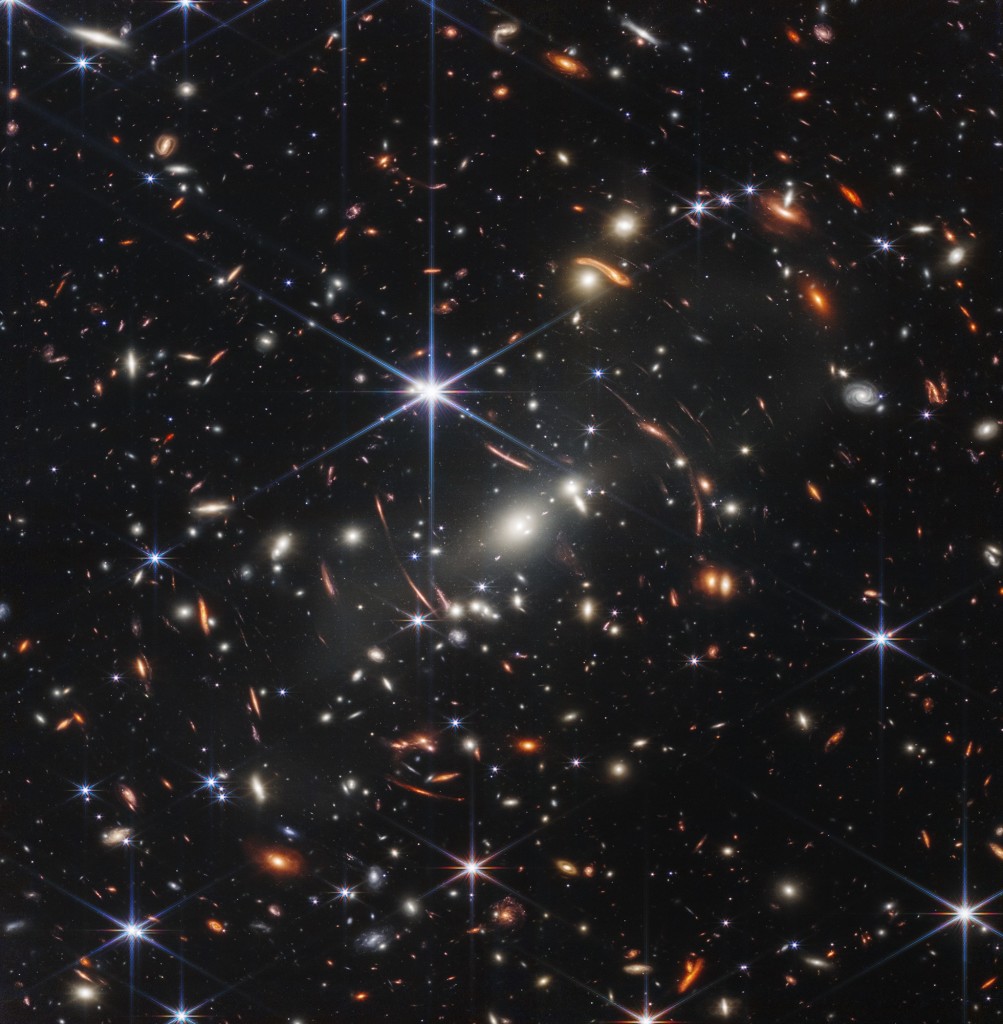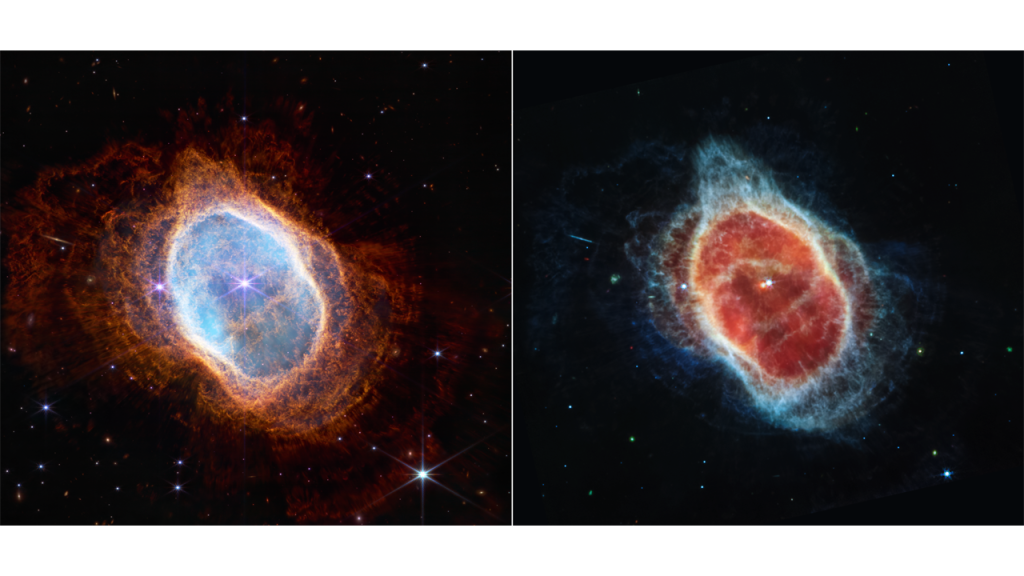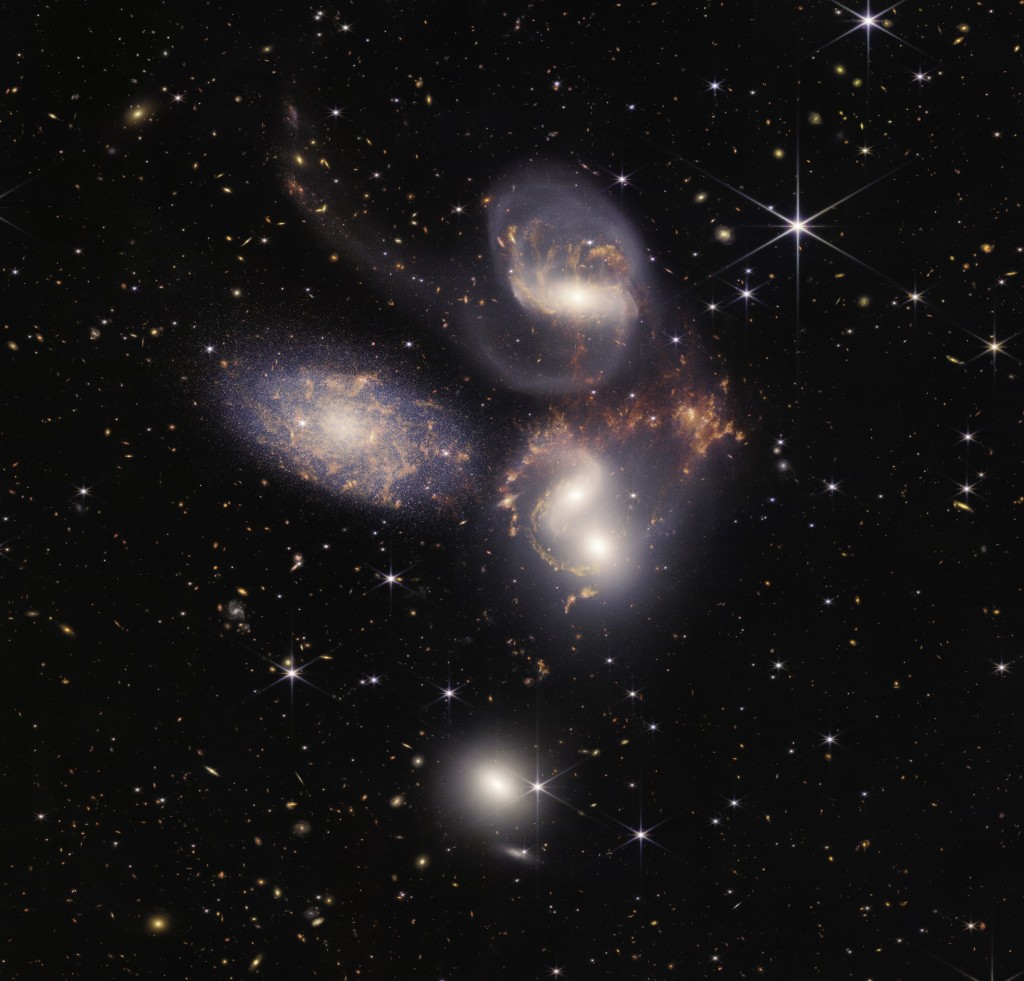Amidst meaningful and justified disenchantment with digital media, NASA’s Webb offers a different course for understanding our relationship with technology. It offers a chance to peer into our existence with greater understanding. It could be this generation’s “Blue Marble” – looking instead outward and deep into time. And it promises to be more than one image – way more than just one.

1972’s The Blue Marble was the Apollo 17 image that (along with some late 60s satellite images) gave humans a complete picture of our planet. It renewed environmentalists; it may even have helped avert nuclear armageddon. (Want to talk about impact? An earlier satellite image influenced The Whole Earth Catalog which in turn helped define the entire modern Internet.) But this picture also was repeated so many times as to become meaningless nowadays – more like “textbook cover” or “pic in my gradeschool classroom” than revelation about the fragility of the ecosystem.
There seems little danger of that with this set of imaging, not as the pics blast into our retinas. The mind-bogglingly sophisticated infrared tech onboard Webb is giving deeper, sharper pictures of our distant universe than our species has ever seen – and we’re only in the opening hours. The picture you’ve seen already today, probably, is a bit of our sky representing roughly “a grain of sand held at arm’s length.” Composited from infrared images so it covers different wavelengths, thousands of galaxies emerge in the magnifying lens of cluster SMACS 0723. That in turn lets you see images from early in the universe’s age – around just a billion years.


And it looks outward instead of inward. It’s a Total Perspective Vortex, only not as unpleasant as Douglas Adams imagined. (I’m sure Adams would have loved this week, anyway.)
It’s worth reading through the full details as released to the public by NASA:
NASA’s Webb Delivers Deepest Infrared Image of Universe Yet
For a sense of just how far the imaging has come, see the MIRI and NIRCam side by side or Webb versus Hubble. This is not iPhone 13 versus iPhone 12 stuff, technologically speaking – it’s going from an old CRT to IMAX in one step.
NASA is spooning out new images, but if you hadn’t tuned in, you might lose for instance images of the death of a star:
NASA’s Webb Captures Dying Star’s Final ‘Performance’ in Fine Detail
Or perhaps the least visual but the most interesting image from the standpoint of data, we get some real information about a planet’s atmosphere:
NASA’s Webb Reveals Steamy Atmosphere of Distant Planet in Detail
JWST’s most underrated image I think from this batch is probably the one of Stephan’s Quintet – produced from 1000 image files for 150 million pixel resolution. Four galaxies (and then a fifth in the foreground, hence the misleading name) appear in stunning detail. What we get is then basically an action shot of the young universe’s hyperactive black holes, spewing superheated material – the primordial soup of raw star creation. It’s like a close-up cooking show for stars.
Details of that:
NASA’s Webb Sheds Light on Galaxy Evolution, Black Holes

I’m not remotely suggesting that the digital media scene needs to double-down on “gee-whiz” techno-fetishism; I expect art needs that about as much as you needed to plunk your entire life savings down on an NFT about three months ago. We need more critical thinking, more contextualization of technology. Despite my framing here, I suspect we need less even the notion of technology as somehow separate from the rest of society.
But JWST offers a glimpse of what technological advancement might afford not only in obscuring the reality around us, but bringing it into sharper focus. It also represents broad scientific collaboration and multinational cooperation – at a time when this is badly needed in space, a domain that recently has been at risk of becoming increasingly nationalistic, militarized, commercialized, and cynical.
What this means to art-making I think is something any of us working in technology – sound or visuals – will likely reflect on. But there is some artistry from the space explorers here which also deserves credit. In making these images available and accessible to the public, scientists I think are themselves worth crediting as artists – there’s work in simply making these machine images readable to our human eyes, in the words written about them and in the way the pictures are transposed to our visible spectrum while retaining accuracy.
We live in a world that constantly seems to threaten greater fragmentation, in which data is largely privatized, in which large data sets and AI often service profit and propaganda in equal measure.
But here is one shared reality, in a public domain (literally and figuratively). It’s one portal through which musicians and artists might also try to serve those common human interests, our wonder and awareness.
I think it could even recast our view of AI and prompts – about understanding imaging with large data sets, rather than fantasizing about machine learning replacing human creation.
And I wonder both what new generation of digital art and what musical sounds might emerge from these revelations.
Given the threats we face, there’s urgency. These images are from billions of years ago. But we don’t have much time, by any scale.
Image credits: NASA, ESA, CSA, and STScI.
Good overview with high-res stuff:
https://www.nasa.gov/webbfirstimages
And for some reason, this is a more complete gallery for Webb with a lot more background, coming from Association of Universities for Research in Astronomy (AURA)’s Space Telescope Science Institute:
https://webbtelescope.org/news/first-images
NIRCam was built by a team at the University of Arizona and Lockheed Martin’s Advanced Technology Center.
MIRI was contributed by ESA and NASA, with the instrument designed and built by a consortium of nationally funded European Institutes (The MIRI European Consortium) in partnership with JPL and the University of Arizona.
bonus – check out the visualization of how gravitational lensing functions in the image: